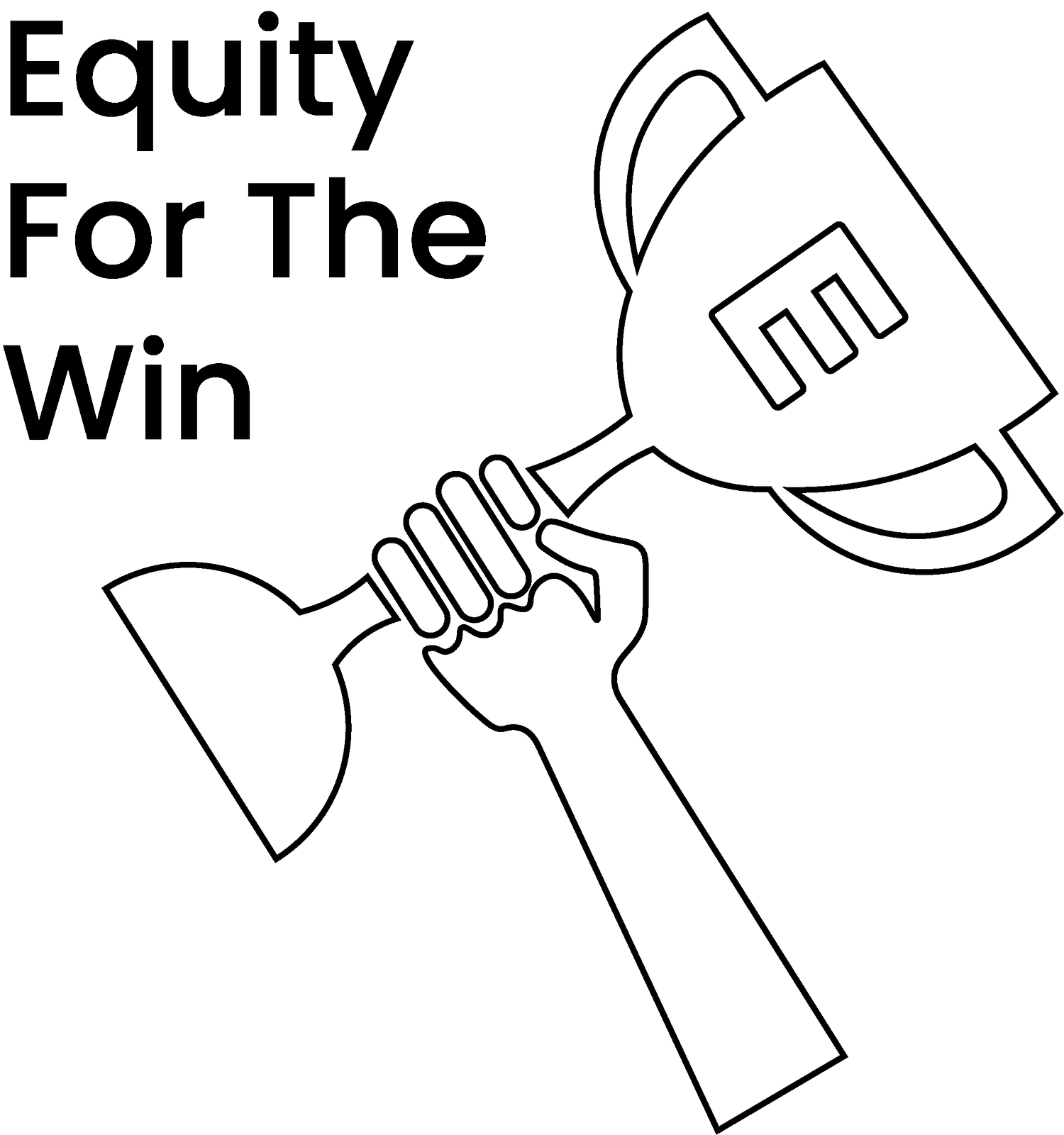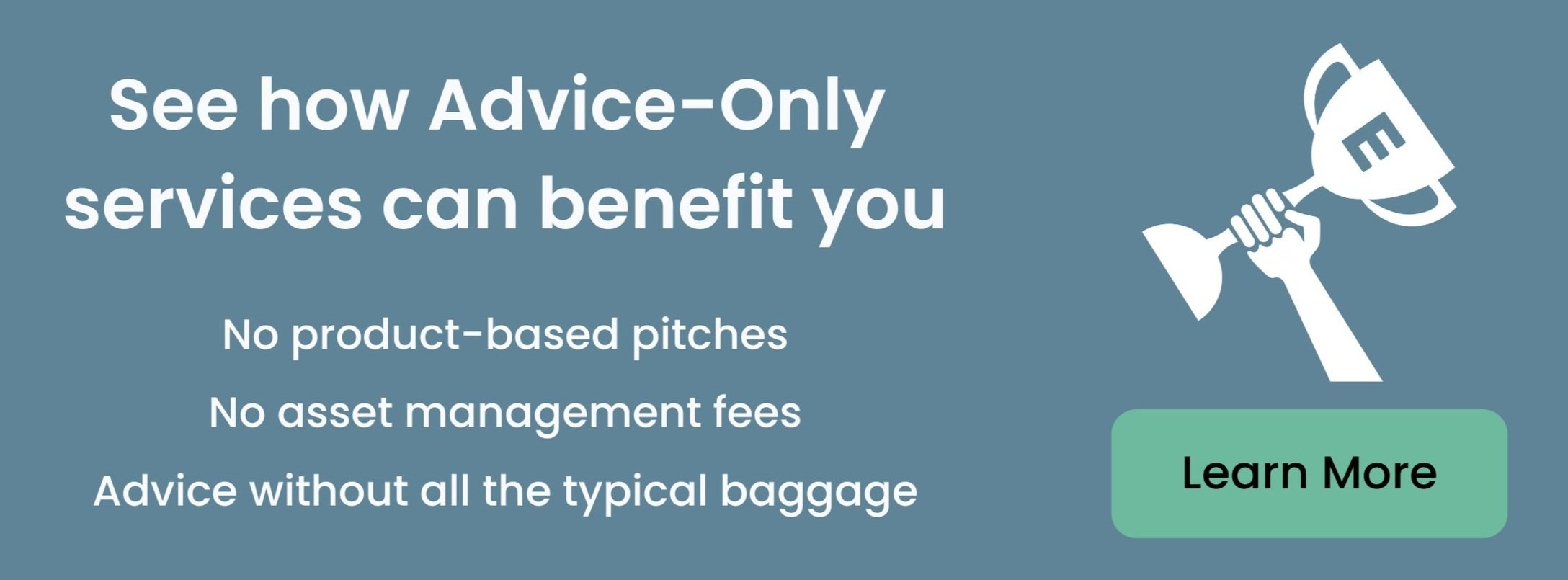Advice-Only Advisors Give the Best Advice
As younger generations build their net worth and experience wealth transfers from older generations, they’re increasingly looking for the best financial advice—and advice-only advisors are emerging as a top choice.
Advice-only financial planners offer a fresh approach by focusing solely on providing guidance without any sales or product-based incentives, setting them apart from others in the industry.
In this article, we’ll explain what advice-only advisors are, compare them with fee-only advisors, and discuss why an advice-only approach could be ideal for you.
Table of Contents ▼
What Are Advice-Only Advisors?
What makes advice-only advisors unique is that they offer financial advice but don’t manage investment assets for clients.
This means that rather than billing a percentage fee on the assets that are being managed, the advisor sets a price for their services, and charges the client directly.
This may seem like a slight difference, but shifting the investment management responsibilities to clients not only saves clients potentially thousands of dollars, it also gives clients greater control, saves the advisor time (which saves clients money), and forces the advisor to stay focused on what’s actually important to clients.
Advice-only advisors' entire focus is helping their clients make sound financial decisions across all the major personal finance topics. So even though they may not do the investment management piece for their clients, advice-only advisors usually are willing to help clients with the implementation via screen share or coaching.
Comparison of Fee-Only and Advice-Only
Fee-only advisors are similar to advice-only advisors because neither group receives commissions or kickbacks.
This means that when either a fee-only advisor or advice-only advisor provides an investment recommendation or a referral to another professional, they do not receive a commission for doing so.
This reduces the potential for conflicts of interest and, instead, allows the focus to remain solely on what is in the best interest of the client. We believe that this is an important shift that leads to better advice.
What people fail to understand is that fee-only doesn’t mean advice-only. The majority of fee-only advisors charge based on the assets they manage.
Although fee-only advisors avoid some of the conflicts of interest that are common with other types of financial advisors, managing investment assets in and of itself can create the opportunity for conflicts of interest since there’s a natural incentive to gather clients' assets to increase the amount an advisor can bill.
For example, lets say a client holds a large chunk of Nvidia RSUs. If the advisor’s recommendation is to sell all the RSUs and invest the cash with the advisor, it’s hard to tell if the recommendation is coming from a place of doing what’s best for the client or providing a recommendation that leads to more assets being managed/more revenue for the advisor.
Why You Want an Advice-Only Advisor
There are 4 primary reasons you might want to work with an Advice-Only Advisor.
#1 - You don't want asset management fees weighing down your portfolio returns.
Whenever you attach costs to investment performance, it drags on future returns a lot more than you’d expect. This is because although you will have compounding interest working for you, you’ll also have some percentage of fees working in the other direction.
To clarify, let’s take a look at a side-by-side comparison of the hypothetical performance of a 5-million dollar portfolio - with no fee, with an asset management fee, and with advice-only fees.
There’s a lot of information in the above comparison, so let’s focus on 4 different areas and analyze them together at the end.
Annual Fees
In this example, it’s assumed that the advisor charging Asset Management Fees (AUM) is charging .75% annually and that the Advice-Only advisor is charging $9,600 a year.
Advisors who bill based on AUM typically have a fee schedule that tiers down as the assets grow or more assets are contributed. We chose .75% as a starting point for $5M in assets because it seemed fair for the purposes of our comparison.
For the Advice-Only advisor fees, we went with $9,600 annually because that’s what we charge at EquityFTW for our base ongoing service.
Billed Fees
The Billed Fees column sums up all of the fees that advisors charged. (It does not take into account the missed growth due to the fees themselves. We’ll provide more information on that in a second.)
Comparing the three rows, the portfolio with no management assistance had zero fees paid. The portfolio with AUM fees had $216,731 in fees paid. And the portfolio paying for an advice-only advisor paid $48,000 in fees.
In other words, the portfolio paying AUM fees ended up paying $168,731 more in fees than the Advice-Only Advisor.
Compounding lost due to fees
The final column on the right calculates the amount of missed investment growth each portfolio had due to the advisor fees being paid.
This is the hidden part of fees that can eat away at a portfolio without clients even realizing it. The larger your portfolio and the longer you pay asset management fees, the more missed growth you’re exposed to.
Differences in final balances
Here are the final balances after five years:
Running a hypothetical scenario like this isn’t perfect, but it does illustrate how these fees can impact your portfolio.
Hearing “1% (or .75%) of investment assets” in theory may not seem like a lot, but in reality can be extremely costly.
An example like this should make you wonder, “Am I getting the value I’m paying for when I work with my advisor?”
We’ll discuss the question of advisors’ value further in bullet #3 below. For the record, advisors can provide tremendous value that far exceeds what they charge, it’s just important that you stay aware of the actual cost.
#2 - You want to maintain control of your investments.
Another reason you might want to choose an advice-only advisor is to keep full control over your investments.
This bullet point is harder to quantify, but many advisors, including fee-only advisors, can introduce unnecessary complexity to your portfolio. If proprietary funds are purchased, or custom stock portfolios are built out, it can be difficult to unwind a relationship with the advisor and can be costly to change the investments themselves.
Some advisors like to make portfolios overly complex and change the investment strategy to appear productive, but (in our experience) much of the time it’s not actually beneficial to the client.
If you’re working with an advice-only advisor, it eliminates this worry and keeps you in control.
#3 - You think the advisor will provide enough value to warrant the fee.
The value of advice essentially falls into three buckets: (1) the easily quantifiable, (2) the not quantifiable yet, and (3) the not quantifiable at all.
The things that are easy to quantify include things like: the advisor advised you to invest your excess cash, or helped you fix an error on your tax return, sell company stock and invest elsewhere, or refinance your mortgage.
The not quantifiable yet category includes things like: future portfolio returns, mistakes the advisor helped you avoid, tax savings from long-term stock options strategies we helped build, savings from doing Roth conversions, benefits from setting up your estate planning documents, etc.
The not quantifiable at all are usually based on feelings and help people going from a state of uncertainty to having confidence and or peace of mind. Examples include: uncertainty whether you’re saving enough, not knowing if you’re invested properly, unsure how aging parents might affect your ability to retire,etc. There are many emotional/psychological benefits of working with an advisor.
Regardless of the value that an advisor charges, the value is all relative to what you experience as a client.
In our previous example, the AUM advisor cost ~$250k over 5 years and the Advice-Only Advisor cost a little over $56k.
Though $250k+ and $56k+ is a lot of money, the cost may be worth it and will depend on the individual.
At the end of the day, people pay advisors for countless reasons and it varies based on what’s important to the person. Both the quantifiable value and non-quantifiable value people receive from advisors is entirely dependent upon each person’s individual situation.
#4 - You enjoy learning and collaborating.
Another benefit to working with an advice-only advisor is that they love to educate and collaborate with their clients.
There are some things advice-only advisors can’t do for clients. Clients implement recommendations on their own with some advisor guidance. Because of the nature of this relationship, advisors are motivated to educate clients so that their clients feel comfortable taking action.
#5 - You only need occasional check-ins.
Another benefit to working with an advice-only advisor is that if you don’t need/want ongoing help, you can usually limit the advice you seek to one-time engagements.
This is particularly helpful if you feel you have a good handle on your current situation but have things you’d like to explore further or get clarity on.
Many advisors who charge AUM will be willing to do a one-time engagement; the problem is that it’s a little hard to trust all of the advice given that they’re incentivized to gather assets.
An advice-only advisor helping you through a one-time engagement will be 100% focused on your needs since that’s literally what they’re being paid for.
Final Thoughts on Advice-Only Advisors
Working with an advice-only advisor is an option that more and more people want.
Many changes have made the advice-only model possible. Technology has made the investment management process so much easier than it was in the past. The ability to communicate over Zoom is much more accepted. And financial planning tools are better designed.
All of these changes have created a climate in which advisors using this business model can provide stellar advice and clients can reap its important benefits.
While it’s not for everyone, we believe it’s an alternative that’s here to stay, and especially for people who work in tech, advice-only is a great option to consider.
If you’d like to schedule a call or learn more about our advice-only services, please follow the links we’ve provided. Thanks for reading!




